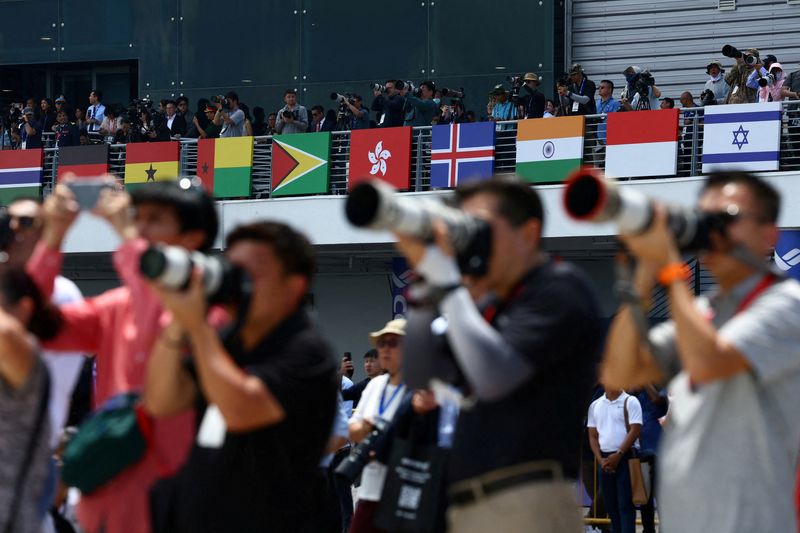By Gerry Doyle
SINGAPORE (Reuters) - Russia's absence from the Singapore Airshow, as its companies struggle with sanctions and the demands of sustaining the invasion of Ukraine, shows an opportunity for rivals to step in with some Asian customers, experts and industry sources say.
Defence giants such as UAC and Russian Helicopters have historically had large presences at Asia's biggest air show, where companies show off a range of systems, from sensors and small arms to massive transport aircraft, missiles and satellites.
This year, however, no Russian companies were listed among attendees - which competitors said was a sign the door was open in Asia.
"In this region you have seen a shift away from Russian equipment already," said Robert Hewson of Sweden's Saab . "Of course there are some natural client countries... who stay where they are" in terms of suppliers.
Sangshin Park, regional manager and chief of international business development for Asia at Korea Aerospace Industries , noted that his company had sold its FA-50 light fighter aircraft to Malaysia in a deal worth more than $1 billion. Malaysia also operates Russian-made aircraft such as the Sukhoi Su-30.
Several other Southeast Asian countries, including Indonesia, Vietnam, Cambodia and Laos, also use Russian-made or Soviet Union-vintage equipment, sometimes alongside Western-made gear.
Russia's largest arms exporters did not respond to Reuters requests for comment.
"I think there will always be opportunities for Western defence companies, and in particular, South Korea would be a highly visible exporter in the region," said Malcolm Davis, a senior analyst at the Australian Strategic Policy Institute.
"It largely depends on the needs of the customer - but I'd imagine maritime and naval capabilities, UAS and drone systems, and combat aircraft and helicopters that can respond to challenges in a maritime and archipelagic environment would be a priority," he added.
A senior executive at a U.S. defence contractor said support for purchased systems was a crucial part of arms sales in Asia and elsewhere. He said that was a selling point for his company, and other Western and Asian industry officials said their firms also saw this as an advantage.
India has been trying to move away from Russian arms imports as munitions and parts are expended in the war in Ukraine, Reuters reported last month.

"As you grow and your needs grow ... you can build upon what exists, and you know that there will be support," said the U.S. company executive, who declined to be named because of the sensitivity of the matter.
No major Asian defence deals have been announced at the air show so far. The trade portion ends on Friday.